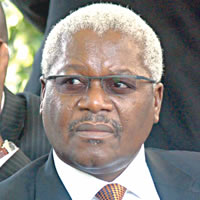‘Loss of vital data led to Airbus crashing’
June 2009 with 228 people aboard, the BEA aviation safety agency said yesterday.
“We have no valid indications,” one of the pilots of flight AF447 from Rio to Paris said, according to information from the flight data recorders released by the French Bureau of Inquiry and Analysis (BEA).
One of the instruments showed “a sharp fall” in airspeed as the aircraft entered a zone of turbulence, the stall warning sounded and the autopilot disengaged.
As the two co-pilots struggled to understand what had happened the captain, who had left the cockpit to take a rest, returned but did not retake control of the plane.
“There was an inconsistency between the speeds displayed on the left side and the integrated standby instrument system (ISIS). This lasted for less than one minute,” the BEA said in a statement following analysis of the “black box” flight data recorders.
An interim inquiry, conducted prior to the raising of the data recorders from the ocean floor earlier this month, had pointed to an icing problem with the probes measuring air speed – known as Pitots – but there was no definitive conclusion as to the cause of the crash.
Pilot’s unions and some of the victims’ families have accused the airline of reacting too slowly to safety warnings, but both Airbus and Air France insist they reacted properly.
Since the accident, Air France has replaced the Pitots on its Airbus fleet with a newer model.
Both companies are being probed for alleged manslaughter in connection with the crash.
Air France yesterday called for waiting for the BAE’s further analysis of the data to determine the precise cause of the crash, although it said it appears “that the initial problem was the failure of the speed probes”.
It praised the “three skilled pilots” who “demonstrated a totally professional attitude” and were committed to carrying out their task to the very end, saying Air France wished to pay tribute to them.
Airbus said the information released yesterday was consistent with the BEA’s preliminary and interim reports and “constitutes a significant step towards the identification of the complete chain of events” that led to the crash.
According to the chronology provided by the BEA, the two co-pilots who were flying the plane decided at two hours and eight minutes into the flight to turn slightly to the left to avoid a zone of turbulence.
Two minutes later the autopilot disengaged, the instruments began showing “a sharp fall” in airspeed and the engine stall warning began to sound.
Low airspeed data can cause the airplane’s computer system to reject as invalid other readings, according to the BAE.
“So, we’ve lost the speeds,” it quoted the second of the two co-pilot as saying.
After the captain returned, “all of the recorded speeds became invalid and the stall warning stopped,” said the BAE report.
The responses by the co-pilot flying the aircraft “were mainly nose-up” and “the airplane climbed to 38,000 feet.”
The BAE said “the descent lasted three minutes 30 (seconds), during which the airplane remained stalled.”
It said “the engines were operating and always responded to crew commands.”
The last data on the recorder showed that the plane’s nose was up at a sharp angle as it plunged at 10 912 feet (3 300 metres) per minute. The captain had left the cockpit less than 10 minutes before the plane encountered trouble, and had discussed with the co-pilots that they were flying into an area of increased turbulence.
Once the trouble began the co-pilots tried several times to contact the captain before he returned to the cockpit roughly one minute and thirty seconds after the stall warning sounded. – Reuters.







Comments